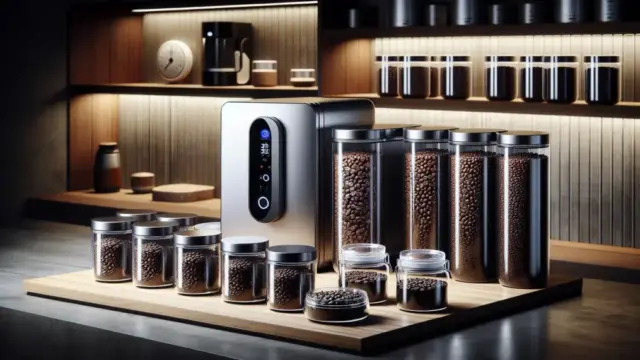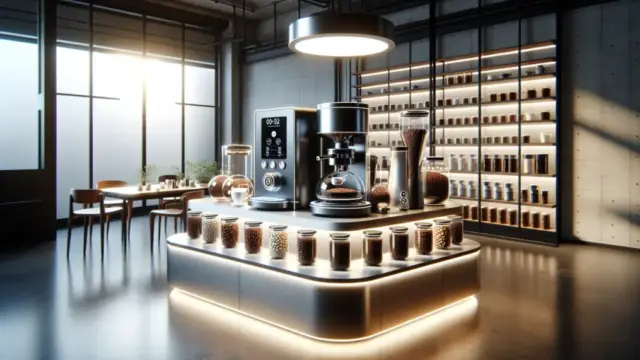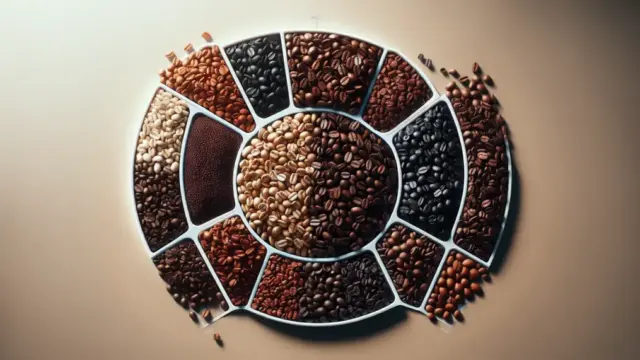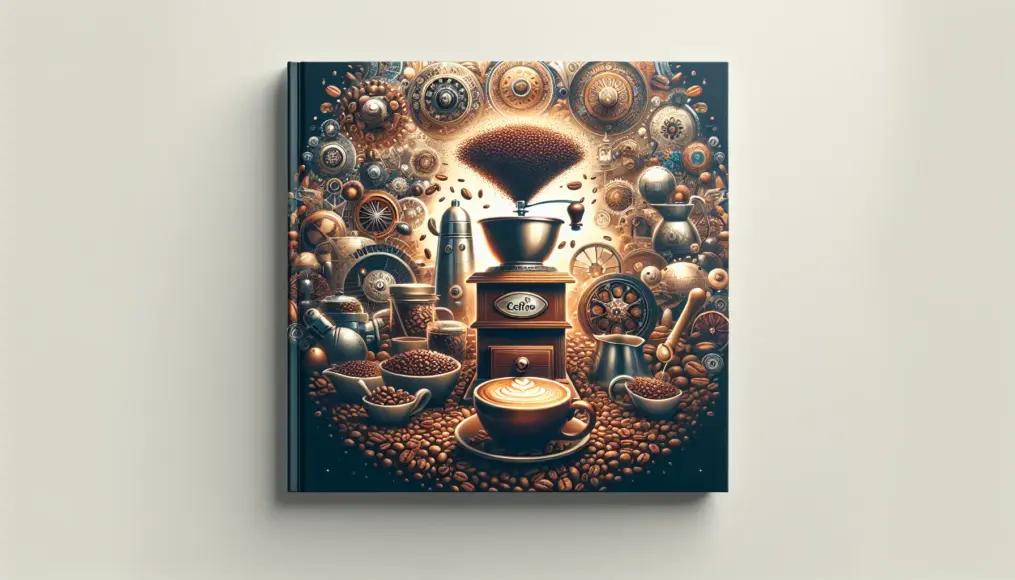Unlocking the charm of home roasting is like discovering a hidden treasure in the world of coffee. Imagine the delightful aroma of freshly roasted beans wafting through your home, bringing a cozy and inviting atmosphere. Whether you’re a curious beginner or a seasoned coffee enthusiast, the journey into home roasting opens up a new dimension of flavor and personalization that can elevate your coffee experience.
Choosing the right coffee beans is the first step on this rewarding path. With so many varieties available, it’s essential to understand the unique characteristics of each type and how they influence the final taste. Knowing how to select beans that match your palate will set the foundation for delicious brews that you can proudly share with friends and family.
As you embark on your home roasting adventure, having the right tools and understanding the roasting process will make all the difference. From simple air poppers to specialized roasters, the options are diverse, and with a few tips and techniques, you’ll be crafting bespoke coffee that suits your style in no time.
Finally, once you’ve roasted your beans to perfection, there’s an array of brewing methods waiting for you to explore. From classic French press to modern pour-over, the choices are endless. Proper storage will also ensure that your hard work and flavorful creations remain fresh, allowing you to enjoy your home-roasted coffee for days to come.
- Discover the charm and benefits of home roasting
- Learn how to choose the perfect coffee beans for your taste
- Explore various brewing methods to enjoy your freshly roasted coffee
What You Should Know Before Starting Home Roasting
The Charm of Home Roasting
Diving into home roasting can be one of the most rewarding experiences for any coffee lover. It’s not just about making coffee; it’s about creating a unique experience tailored to your taste. The ability to control every aspect of the roasting process allows you to experiment with different flavors, aromas, and intensities that simply cannot be replicated with store-bought options. Picture yourself enjoying a cup of coffee that you’ve roasted yourself, savoring the rich notes that reflect your personal touch.
Moreover, home roasting fosters a deeper connection with your coffee. Understanding the journey from green beans to a perfectly roasted batch can be incredibly satisfying. It transforms your morning routine into a mindful ritual, where each cup becomes a celebration of your skills and creativity. As you refine your technique, you might even discover new favorite profiles that surprise you and your friends alike.
So, before you jump in, take a moment to appreciate the charm of this craft. Embracing home roasting means embracing a world of flavor that is entirely yours to explore.
- Home roasting allows for personalization and creativity
- It transforms your coffee experience into a mindful ritual
- You’ll discover unique flavors that reflect your preferences
Tools and Materials Needed for Roasting
To get started with home roasting, you’ll need a few essential tools and materials. First and foremost, a quality coffee roaster is key. While you can use an air popper or even a stovetop pan, investing in a dedicated roaster can elevate your results significantly. It gives you better control over heat and timing, leading to more consistent roasts.
In addition to a roaster, having a reliable scale will help ensure you’re measuring your beans accurately. This is important because the amount of coffee you roast can hugely impact the flavor. You’ll also need a cooling tray to quickly cool the beans after roasting, as this helps lock in the flavors. Finally, don’t forget to grab some green coffee beans—make sure to choose a variety that intrigues you, as this will be the foundation of your roasting journey.

If you’re eager to dive deeper into the world of coffee, you might find our article on A Beginner’s Guide to Choosing and Brewing Aromatic Coffee You’ll Love! particularly enlightening. This piece explores how to select and brew aromatic coffee, enriching your home roasting experience with new flavors and techniques to try.
- A dedicated coffee roaster for better results
- A reliable scale for accurate measurements
- A cooling tray to lock in flavors after roasting
How to Choose Coffee Beans
Types of Beans and Their Characteristics
When embarking on the journey of home roasting, understanding the different types of coffee beans is crucial. The two most common varieties you’ll encounter are Arabica and Robusta. Arabica beans are known for their smooth, complex flavors and higher acidity, making them a favorite among coffee lovers. They often have fruity or floral notes, which can add depth to your roasted coffee.
On the other hand, Robusta beans tend to have a stronger, more bitter flavor. They contain more caffeine, which can give your coffee a bit of a kick. Robusta is often used in espresso blends due to its rich crema and bold taste. By familiarizing yourself with these characteristics, you can select beans that align with your flavor preferences and roasting style.
- Arabica beans offer smooth, complex flavors
- Robusta beans provide a stronger, bolder taste
- Understanding these types helps tailor your roasting experience
Choosing the Right Roast Level
As you refine your home roasting skills, deciding on the right roast level becomes an important factor. Roasting levels range from light to dark, each bringing out unique flavor profiles. Light roasts preserve the original taste of the bean, highlighting its fruity or floral notes. If you enjoy a bright, acidic cup of coffee, light roasting might be your go-to.
Medium roasts strike a balance, offering a combination of acidity and body. This level is popular for those who appreciate the complexity of flavors without the overwhelming intensity of a dark roast. Dark roasts, in contrast, boast bold, rich flavors with less acidity. They often have a smoky or chocolaty profile that many coffee enthusiasts adore.
Experimenting with different roast levels can be a fun part of your coffee journey. You might find that you prefer certain beans roasted to different levels, allowing you to create a personalized collection of flavors. Keep in mind that the roasting time and temperature will affect the final outcome, so don’t hesitate to take notes and adjust your techniques as you go.
By exploring these roast levels, you’ll not only enhance your brewing experience but also develop a deeper appreciation for coffee as a whole. Your home-roasted beans will reflect your unique taste, making each cup a true representation of your coffee journey.
- Light roasts highlight original bean flavors
- Medium roasts offer a balanced profile
- Dark roasts bring bold, rich tastes
- Experimentation leads to a personalized coffee experience
Practicing Home Roasting
Basic Steps of Roasting
Now that you’ve chosen the perfect coffee beans and have the right tools in hand, it’s time to dive into the exciting process of home roasting. The first step is to measure out your green coffee beans. Generally, a good starting point is around 100 to 200 grams, depending on your roaster’s capacity and how much coffee you want to make.
Once you’ve measured your beans, preheat your roaster. This is crucial because starting with a hot roaster helps ensure even roasting. As you begin roasting, keep a close eye on the beans. They will go through several stages, starting from green to yellow, then to the first crack, and finally to the desired roast level. Be ready to adjust the heat and time according to your preferences.
After reaching your desired roast level, it’s essential to cool the beans quickly. This can be done using a cooling tray or by pouring them into a metal colander and shaking them. Rapid cooling helps lock in the flavors and aromas that make your roast unique. Finally, let your freshly roasted beans rest for a day to allow the flavors to develop before brewing.
- Measure your green beans to start
- Preheat your roaster for even roasting
- Cool the beans quickly after roasting
Tips for Successful Roasting
As you embark on your home roasting journey, keep in mind a few helpful tips to ensure success. First, consistency is key. Try to maintain a similar environment each time you roast, including temperature and humidity. This will help you achieve reliable results and refine your technique over time.
Another important aspect is to always take notes during your roasting sessions. Document the bean type, roast level, and any adjustments you made. This practice allows you to learn from each experience and replicate your best roasts in the future. You might even discover a favorite combination that becomes your signature brew!
Lastly, don’t hesitate to experiment with different beans and roast levels. The beauty of home roasting is that it’s all about personal preference. Trying various combinations can lead to delightful surprises and unique flavor profiles. Enjoy the process, and remember that every roast is an opportunity to learn and grow as a coffee lover.
- Maintain a consistent roasting environment
- Document your roasting sessions for better results
- Experiment with different beans and roast levels for variety
Enjoying Coffee After Roasting
Varieties of Brewing Methods
Once you have successfully roasted your coffee beans, it’s time to explore the various brewing methods that will allow you to enjoy your creation to the fullest. Each brewing technique brings its own unique characteristics to the cup, so experimenting can be a delightful part of your coffee journey. From classic methods to modern innovations, there are countless ways to savor the rich flavors of your home-roasted coffee.
For instance, using a French press can extract a robust and full-bodied flavor, making it a favorite for many coffee enthusiasts. The immersion brewing process allows the coffee grounds to steep, resulting in a rich, aromatic brew. Alternatively, if you prefer a cleaner taste, pour-over methods like the Chemex or V60 can highlight the intricate flavors of your roasted beans. The control you have over water flow and temperature can elevate your coffee experience significantly.
Whichever method you choose, remember that the key to enjoying your home-roasted coffee lies in the details. Pay attention to the grind size, water temperature, and brewing time, as these factors can greatly influence the final taste. Don’t be afraid to adjust and refine your technique until you find your perfect cup.
- French press for a rich, full-bodied flavor
- Pour-over methods for a cleaner taste
- Adjust grind size and brewing time for best results
Storage and Management of Coffee
Once you’ve brewed your perfect cup, it’s essential to consider how to store your remaining roasted beans properly. Proper storage is vital to maintain the freshness and flavor of your coffee, ensuring that each cup tastes as delightful as the first. Air, moisture, heat, and light can all negatively impact your beans, so it’s crucial to protect them.
An airtight container is your best friend when it comes to coffee storage. Glass or opaque containers that seal tightly can help prevent exposure to air and light. Additionally, keeping your coffee in a cool, dark place will further safeguard the beans from heat and moisture. Avoid keeping your coffee in the refrigerator, as the moisture can lead to undesirable flavors. Instead, a pantry or cupboard works best for maintaining freshness.
As you enjoy your home-roasted coffee, remember to manage your supply effectively. It’s a good idea to roast in smaller batches that you can consume within a week or two. This way, you’ll always have the freshest coffee to enjoy. Plus, it gives you the opportunity to experiment with different beans and roast levels more frequently, keeping your coffee experience exciting.

If you’re intrigued by the art of brewing unique coffee flavors, you might find value in exploring this article: A Beginner’s Guide to Choosing and Brewing Aromatic Coffee You’ll Love!. It delves into selecting aromatic coffee and brewing techniques that can elevate your coffee experience even further.
- Use airtight containers for storage
- Keep coffee in a cool, dark place
- Roast in small batches for maximum freshness
Summary of Home Roasting and Coffee Selection
As we wrap up our exploration of home roasting and coffee selection, it’s clear that delving into this world can be both satisfying and transformative. The journey of roasting your own beans allows you to customize flavors and aromas, creating a coffee experience that resonates with your personal taste. By understanding the nuances of different coffee bean types and roast levels, you empower yourself to craft unique brews that showcase your creativity.
Moreover, the tools and techniques discussed along the way, from measuring and roasting to storage and brewing, are essential for maximizing the enjoyment of your home-roasted coffee. Embracing these elements will not only enhance your skills but also deepen your appreciation for every cup you brew, making each sip a delightful celebration of your coffee journey.
- Home roasting allows for personalization and creativity, enhancing the coffee experience.
- Understanding different bean types and roast levels helps craft unique flavors.
- Proper storage and brewing techniques are essential for maintaining freshness and flavor.
We’d love to hear about your home roasting experiences! What flavors have you discovered, or what techniques have worked best for you? Feel free to share your thoughts in the comments below!
































































Comment